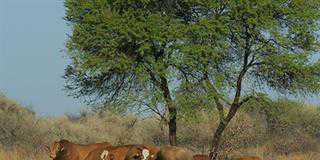According to Agbiz economist Wandile Sihlobo, there were some movements in various food sub-sector categories, though.
The ‘meat, fish, fruit, vegetables, oils and fats’ category decreased by 1,3% from the previous month, largely due to a fall in meat and oils product prices. Sihlobo said that meat prices for producers dropped as a result of the 218 000 cattle slaughtered in April.
However, this decrease was offset by a 4,3% increase in the ‘dairy products’ group, which is in line with the seasonal increase in dairy product prices. Sihlobo expects that dairy prices will increase in the third and fourth quarters of 2016 as grazing improves during the summer season. This should result in an increase in milk production.
However, he said that the dairy industry remains under extreme pressure and many producers are struggling to stay in business.
Jan Greyling, an agricultural economist at the Department of Agricultural Economics at Stellenbosch University, advised farmers not to overextend themselves given the current conditions in the sector.
“The probability of lower prices is higher than the alternative [increasing prices],” said Greyling.
The El Niño system is weakening according to weather forecasts, and this could lead to better harvests in the coming season.
However, Greyling said long-term trends point to a weakening rand even though the currency might recover slightly in the short-term. This could have a positive impact on the price of inputs. “However, we do know that such prices do not come down as much or as quickly as they go up,” added Greyling.
Global turmoil and South Africa’s struggling economy have placed local consumers under pressure.
“This will also not help to support the consumption of higher value proteins and other higher value foodstuffs,” said Greyling.












